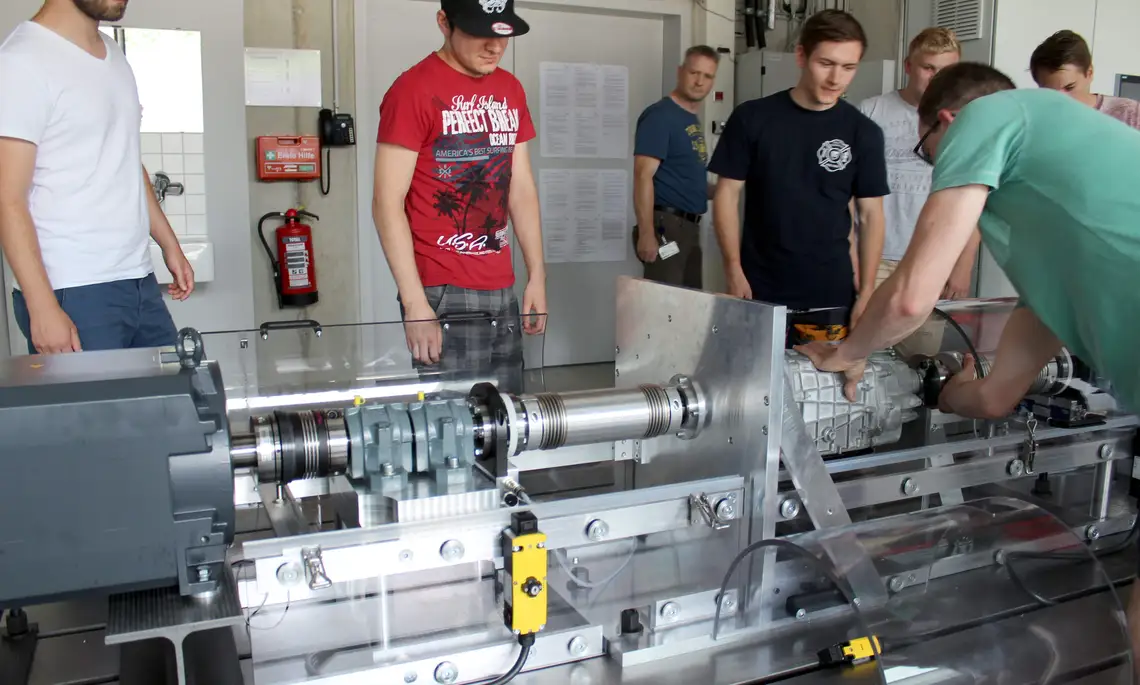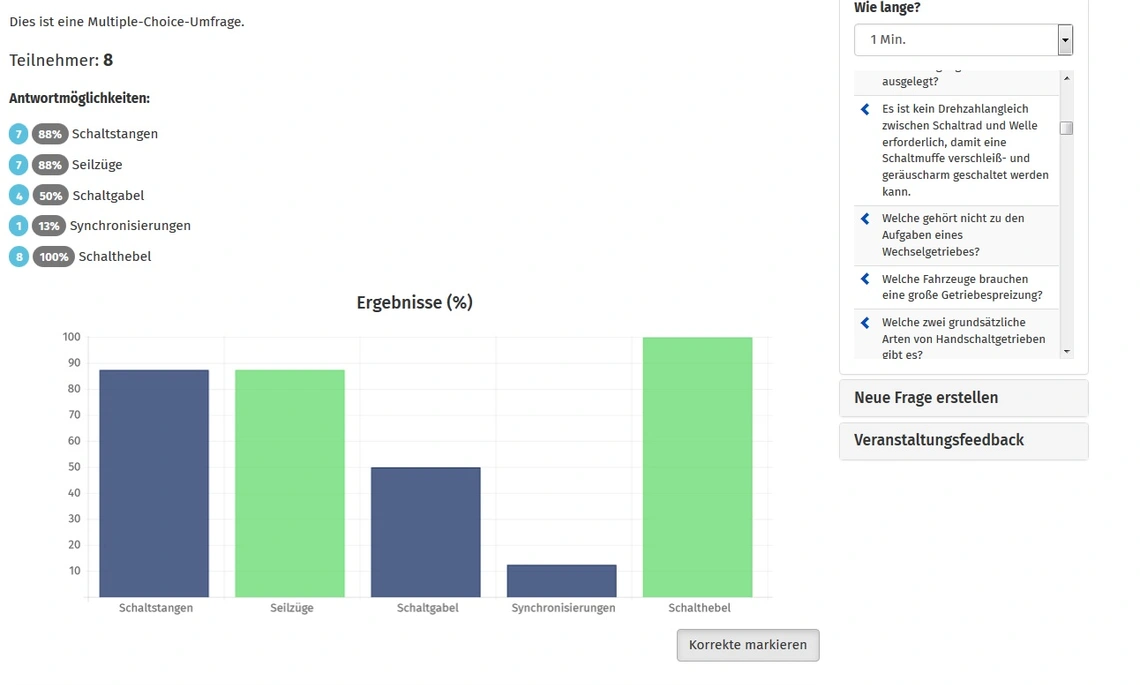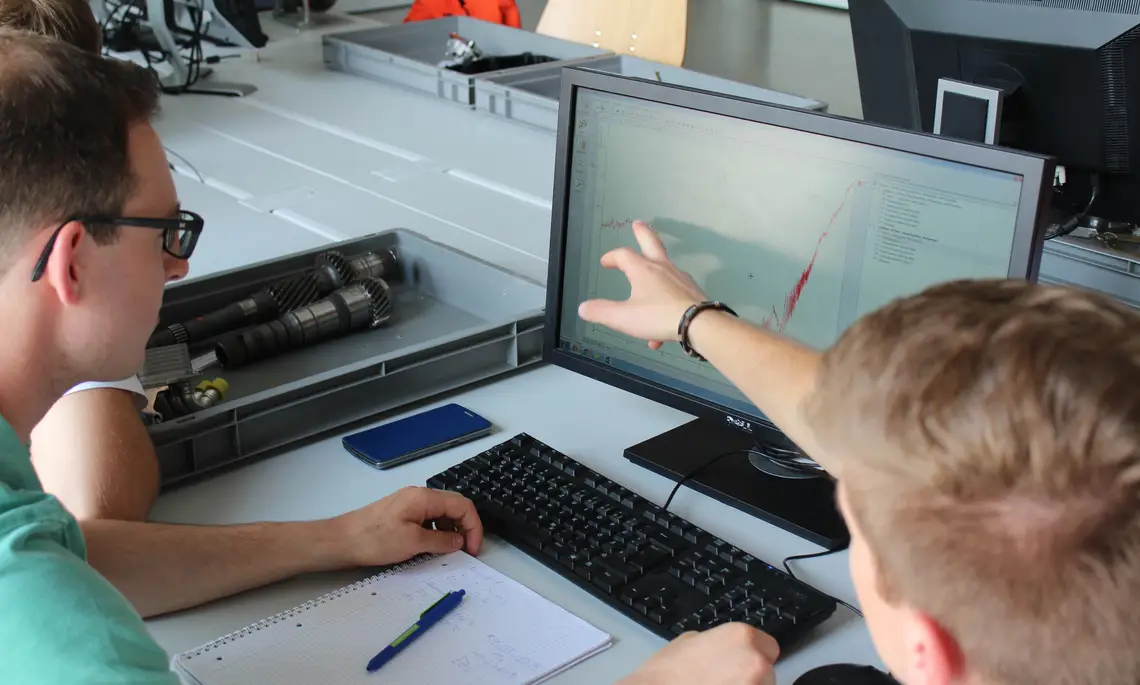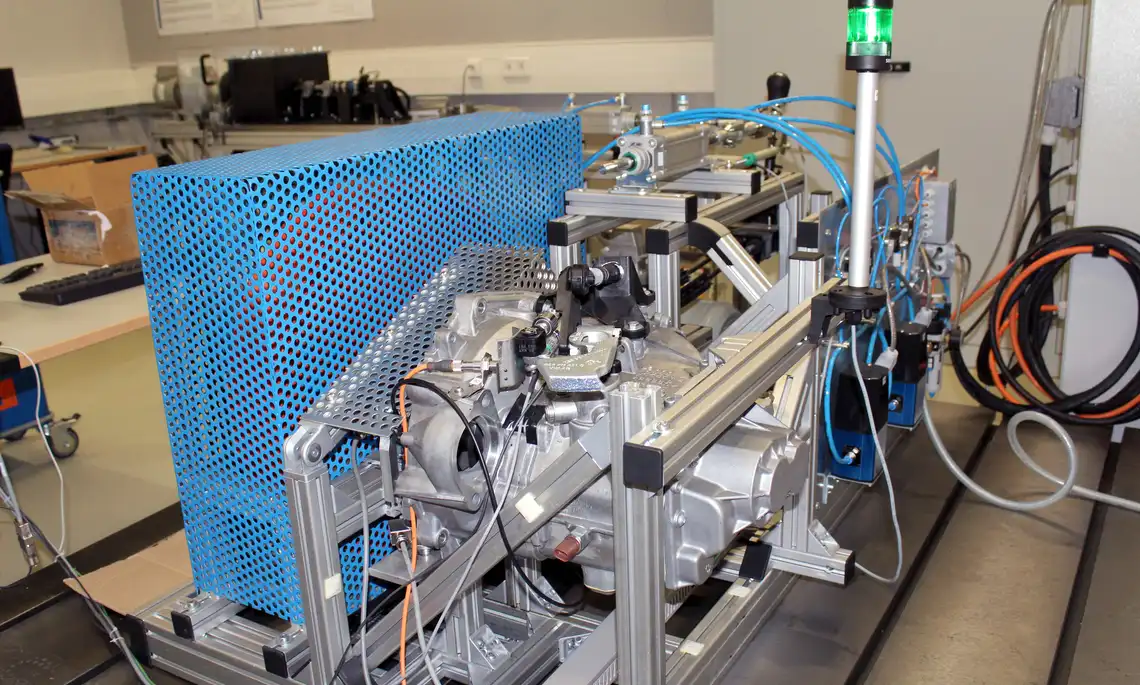The Laboratory of drivetrain technology and tribology deals with fundamental and topical questions of drive technology, primarily in terms of automotive and industrial gear boxes. Extensive training and research activities are made in the areas of manual and automatic transmissions and tribology friction pairings.
Goals and idea
During the training of students in the field of drive technology, various test benches and methods are used:
- Testing and analysis of transmission components such as synchronizers, gearshifts, etc.
- Basic research on tribology Fatigue strength tests
- Fatigue testing
- Design, calculation and tolerance analysis of transmission systems
- Switching performance and switching comfort analysis in the vehicle
- Simulation of automotive powertrains and shifting processes
- Analyses of gearboxes of all kinds with regard to function, design and construction
- Development of drive systems for industrial applications
Laboratory equipment and activities
The linear tribometer is used in addition to the otherwise common rotary tribometers. Translational processes can thus be recorded more realistically. In particular, statements on static friction can be made through the reversal of motion.
In the vehicle, switching processes are examined by means of mobile measuring technology. This enables objective statements to be made on shifting comfort (force/displacement curve) as well as on the type and extent of shifting comfort disturbances (bouncing, upshift scratching, 2nd pressure point, insert hanger, blocker, etc.). Furthermore, these measurements are used to calibrate and validate shift simulations.
The fatigue strength test bench is used to examine powertrain components. For example, index plates of synchronizer rings or thrust pieces can be tested. Changing loads (e.g. for index plates on synchronizer rings) or pulsating loads (e.g. for thrust pieces) can be defined.
With the manual transmission test bench, functional and endurance tests can be carried out on transverse and longitudinal transmissions to test synchronizers and shift operations. Drag torques are displayed with a brake installed on the clutch side. This allows the influence of the drag torque (e.g. with cold transmission) on the shifting process and synchronization to be investigated. For a subjective assessment of the gearshift, the gearshift is operated manually via the original gearshift lever and the original shift linkage. For objective measurement as well as for lifetime tests the shifting process is carried out pneumatically.
The friction coefficient measuring device can be used to investigate the friction properties of different material pairings as a function of various influencing parameters. For this purpose an upper sample is moved over a lower sample. In addition to different materials of the samples, the pressure (via normal forces and the contact surfaces) and sliding speed (via the drive weights) can be varied.
The efficiency test bench is used to investigate the efficiency and to determine structure-borne and airborne noise. The gear to be tested is operated in an electrical bracing. This means that the drive is from an electric motor to the gearbox input shaft.
The output side of the gearbox is connected to a generator. The shifting is done mechanically via a linkage in a load-free state. A torque sensor is integrated on both the input and output side. The transmission efficiency can be determined by determining the differential power between input and output. The measuring technology is supplemented by a temperature sensor in the oil sump, acceleration sensors for determining structure-borne noise and a microphone for determining airborne noise.
The synchronization test benches are used to investigate the functional and service life behavior of synchronizers and shift elements as used in manual and double-clutch transmissions. Independent of the transmission environment, the influences of axial forces, differential speeds, friction work, friction power, lubricant, quantity and temperature, etc. on the friction and wear behavior can be precisely determined.
- Machine elements 1/2
- Drive Technology
- Product development
Lab management and team
Phone: +49 841 9348-3880
Room: A203
E-Mail: christian.vonperponcher@thi.de
Prof. Dr.-Ing. Thomas Suchandt
Phone: +49 841 9348-3710
Room: A226
E-Mail: Thomas.Suchandt@thi.de
Download
German language only: Flyer Antriebstechnik und Tribologie










![[Translate to English:] Logo Akkreditierungsrat: Systemakkreditiert](/fileadmin/_processed_/2/8/csm_AR-Siegel_Systemakkreditierung_bc4ea3377d.webp)








![[Translate to English:] Logo IHK Ausbildungsbetrieb 2023](/fileadmin/_processed_/6/0/csm_IHK_Ausbildungsbetrieb_digital_2023_6850f47537.webp)


